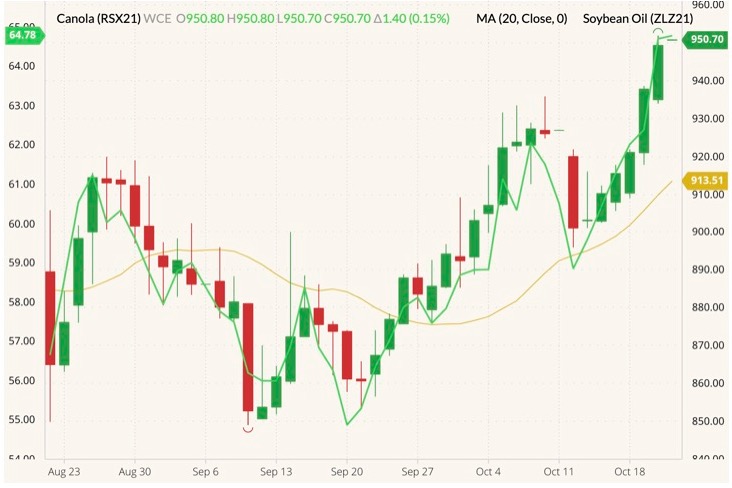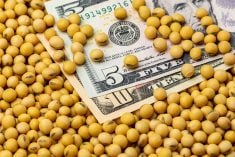MarketsFarm — With good gains from other edible oils, canola has remained on the rise so far during the week of Oct. 18.
It’s uncertain as to how much longer the rally could press on, but analyst David Derwin of PI Financial in Winnipeg said canola punching through $1,000 per tonne again is possible.
“Never say never, it’s gotten there before,” he said.
Over the course of the last week, November canola has jumped $46.10, closing at $949.30 per tonne on Wednesday. Over the same time, Chicago soyoil for December has climbed 5.11 U.S. cents, to hit 64.7 U.S. cents/lb.
Read Also

U.S. grains: Soy futures post biggest monthly gain in nearly five years on China trade optimism
U.S. soybean futures climbed to a 15-month high and posted their biggest monthly gain in nearly five years on Friday following a rally fueled by the prospect of revived exports to China.
Canola has caught a good amount of spillover from the soy complex on the Chicago Board of Trade (CBOT), particularly soyoil. More support has been coming from significant increases in European rapeseed and Malaysian palm oil, of which both have hit new contract highs recently.
“Technically on the charts, the buying activity and the trading activity are saying [canola] is going higher,” Derwin said.
Besides comparable oils, the Canadian oilseed has also been getting support from its tight supply situation and a marked downturn in production on the Prairies this year. Derwin noted buyers are grabbing whatever canola they can get their hands on.
Despite the Canadian dollar busting through 80 U.S. cents and still climbing, the analyst said the loonie has not been too much of a factor when it comes to canola prices. He pointed to wheat and oat prices having more influence than the dollar.
Still, a higher loonie means more expensive canola on the export market. Price rationing has curtailed exports to a great degree so far in the 2021-22 marketing year.
— Glen Hallick reports for MarketsFarm from Winnipeg.











